A Guide to Metal Watch Bracelets: 14 Types to Know
If a leather strap is a watch’s classic, go-to outfit, then a metal bracelet is its bold, versatile counterpart. Metal watch bracelets aren’t just practical—they’re a statement. They combine durability with style, offering a polished look that can range from sleek and modern to rugged and timeless. Whether you’re heading to a formal event, the office, or simply out for the day, the right metal bracelet can elevate your watch and complement your overall style.
But with so many types out there, it can be tricky to know where to start. Should you go for the iconic Oyster bracelet or something more intricate like the Milanese? In this guide, we’ll break down 14 popular types of metal watch bracelets, diving into their unique features, designs, and what makes each one special. By the end, you’ll know exactly which bracelet fits your watch—and your personality—best.
Note: Most watch bracelets are commonly made from stainless steel, though they can also feature materials like gold, titanium, or other precious metals.
Contents
- 14 Types of Metal Watch Bracelets
- 1. The Oyster Bracelet
- 2. The Jubilee Bracelet
- 3. The President Bracelet
- 4. The Pearlmaster Bracelet
- 5. The Milanese Bracelet
- 6. The Shark Mesh Bracelets
- 7. The Beads of Rice Bracelet
- 8. The Engineer Bracelet
- 9. The Bonklip Bracelet
- 10. The Ladder Bracelet
- 11. The H-link Bracelet
- 12. The Integrated Bracelet
- 13. The Expansion Bracelet
- 14. The Rally Bracelet
- Conclusion
14 Types of Metal Watch Bracelets
Before diving into the types of metal watch bracelets, let’s go over some basic terms to help you understand their construction:
1. Links: These are the individual metal segments that form the bracelet. They come in various designs and sizes, which we’ll explore as we discuss different bracelet styles.
2. End Links: These are the links at the ends of the bracelet that connect it to the watch case. There are two types:
- Hollow End Links: Made from thin, hollow metal, they create a vintage feel but may rattle.
- Solid End Links (SEL): Made from solid metal, they offer durability, a precise fit, and a seamless look.
3. Clasp: The closure mechanism that secures the bracelet. Clasps vary in design to match the style of the watch.
Now, let’s explore the most popular types of metal watch bracelets, starting with the Oyster.
1. The Oyster Bracelet
The Oyster is a three-piece link metal watch bracelet, with two rows of smaller links on either side of a middle row of large flat links. It was first used by Rolex and is still considered the most iconic of the bracelet types due to its uniform size and simple yet formal appearance. A link can be removed or replaced at any time, so wearing it for years is not anything out of the question.
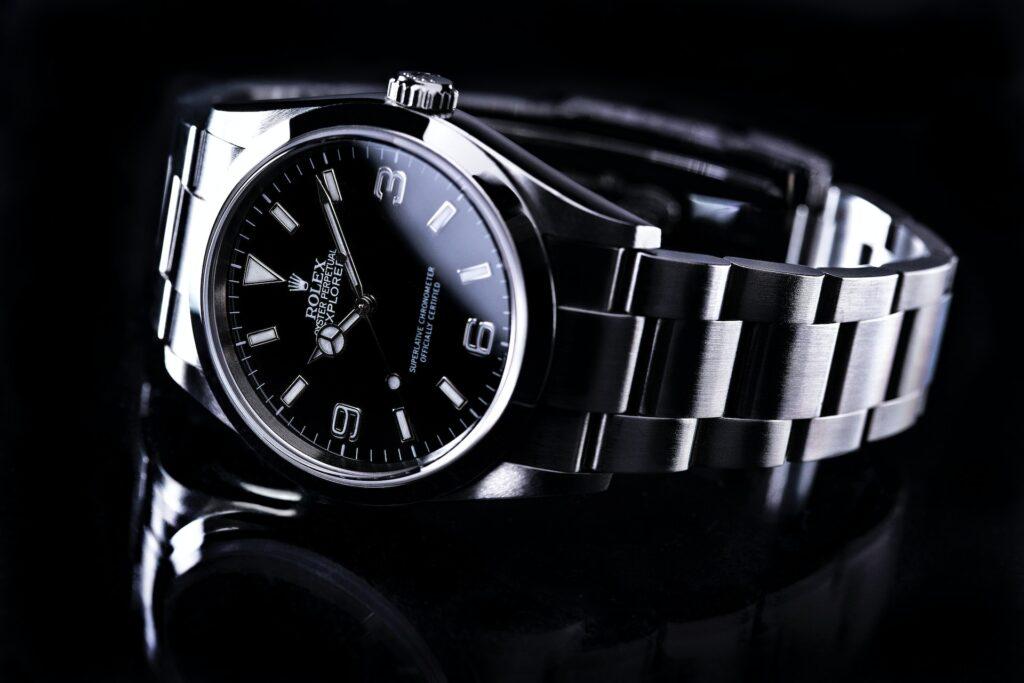
They come in two types. The first is the super oyster and the second is the regular oyster. The difference between these two is that the super oysters generally have thicker screw-in pins and solid end links, making them heavier and more solid than regular oysters.
2. The Jubilee Bracelet
Unlike the oyster bracelet’s 3-link design, the jubilee bracelet is created with a 5-link design. It consists of three small center links flanked by larger links on either side. The jubilee bracelet was first introduced in 1945 by Rolex on its 40 anniversary. It was designed specifically for Rolex Datejust.
Image: Strapsco.com
The jubilee bracelets are the second most popular bracelets in the watch world. You’ve most likely seen them on Rolex and Seiko watches. They have a dressier appearance compared to other metal bracelets, due to the intricate and decorative nature of the design. Additionally, they are known for their comfortability and flexibility, thanks to their many smaller links.
Two-tone (Gold & Silver) jubilee bracelets are also popular in the market. Basically, they are made of stainless steel with a gold PVD coating on the middle little links.
There are two types of Jubilee bracelets: Angus (regular) and Super. The main difference between the two is the size of the clasp and the links. Angus-j has a larger clasp and thicker, heavier, and larger links, which are hollow. On the other hand, Super-j has smaller links that are solid.
3. The President Bracelet
The President bracelet is somewhat similar to the Oyster bracelet in that it is a three-link design. But It has semi-circular as opposed to the flat links of the oyster bracelet. The links gradually increase in size as they approach the center of the bracelet, with the middle row of links being larger than the outer two rows.
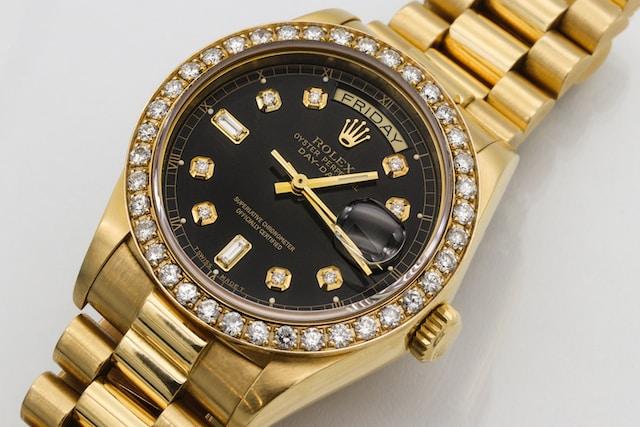
The President bracelet was first introduced in the 1960s by Rolex. It was designed specifically for the President of the United States. The President Bracelet is one of the most popular styles because it is versatile and can be worn with a variety of outfits. It is also one of the most comfortable to wear because of its semi-circular links.
4. The Pearlmaster Bracelet
The Pearlmaster bracelet is a five-link bracelet with a single row of large middle links and two rows of tiny links on either side. All links are slightly rounded and the center links of the bracelet are decorated with exquisite diamonds, which give it a stunning and sophisticated appearance.
The Pearlmaster bracelets are a popular choice for women’s watches because it is comfortable to wear and looks good with a variety of outfits. It is only made from precious metals like yellow, white or rose gold, or platinum. The first Pearlmaster bracelet was introduced in the 1992s by Rolex and was designed specifically for the Rolex Lady-Datejust Pearlmaster watch collection.
5. The Milanese Bracelet
The Milanese Bracelets are made from metal wires that are twisted together to form a bracelet. The Milanese Bracelets give an elegant and sophisticated look to any outfit.
Image: Strapsco.com
They were produced in the late 1800s by the Milanese watchmakers. And then German watch strap manufacturers Staib and Vollmer began making Milanese or Mesh watch bracelets in the 1920s, which appeared on many classic timepieces. Nowadays Milanese bracelets are commonly seen on fitness trackers and smartwatches.
6. The Shark Mesh Bracelets
Shark Mesh Bracelets are similar to Milanese bracelets in that they are made from twisted metal wires. However, the shark mesh bracelets have somewhat larger and looser links than the Milanese bracelets. The bracelet gets its name from the shark-like pattern of the mesh, which creates a distinct texture and appearance.
Image: Strapsco.com
Shark Mesh watch bracelets look sleek and stylish on the wrist and provide excellent grip. They are also easy to clean and maintain. The first mesh watch bracelet was introduced by Omega in the 1970s. It was designed specifically for Omega’s Seamaster line of watches.
7. The Beads of Rice Bracelet
The Beads of Rice bracelet was originally introduced in the 1940s and has since become a popular choice for vintage and dress watches. Its unique design of small, rice-shaped beads strung together creates a classic and timeless look. The bracelet’s construction follows the natural shape of the wrist, providing a comfortable fit and making it a great option for everyday wear.
Image: Strapsco.com
The Beads of Rice Bracelet comes in two different styles: one with two rows of large flat links on either side of the beads, and the other with only oval-shaped (rice-shaped) beads and no additional rows of large links.
8. The Engineer Bracelet
The Engineer bracelets are made of five rows of equally sized links. Each link has a hexagonal shape. The thicker links make these bracelets feel heavier on the wrist. It was once common to see these bracelets on Seiko dive watches. The Engineer bracelet is suitable for watches with heavy cases and large dials.
Image: Strapsco.com
9. The Bonklip Bracelet
Walter M. Krementz, a jewelry specialist based in New Jersey, invented the Bonklip Bracelets in the late 1920s. During the 1950s and 1960s, these bracelets were widely used on British military watches. Their popularity spread from the United Kingdom to the rest of the world.
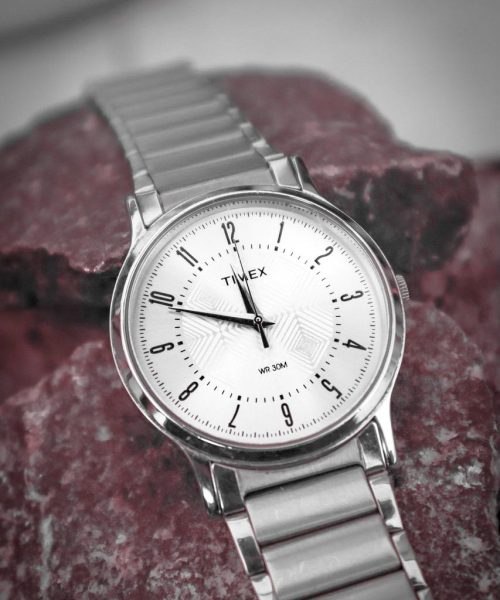
The Bonklip bracelet is made of two separate rows of links that are connected with a closed-end link. Both rows are made of flat, thin loops that are connected by tubular links. One of the rows slides into the other through a slightly bigger loop at the end. The small L-shaped clasp that looks like another link at first glance can be positioned along the entire wrist length. It can be tucked in between any of the two links along the entire row. The main advantage of the Bonklip Bracelet is that it can be infinitely adjusted to fit any wrist size.
The design of the Bonklip bracelet is very unique and has been used on all sorts of watches, from Rolex to Patek Philippe. It is especially suitable for watches with small cases and (In our opinion) looks perfect on women’s watches. However, It’s also popular on men’s watches.
10. The Ladder Bracelet
The Ladder Bracelet was first introduced in the mid of the twentieth century by famous bracelet manufacturer Gay Frères. It was prominently paired alongside the famous Zenith El Primero watch. Now the well-known American company Forstner has recreated its own version of the Ladder Bracelet.
Image: Strapsco.com
The ladder bracelet is similar to an oyster bracelet but has larger gaps between the center links. The gaps lighten the bracelet and make it more flexible and comfortable to wear on the wrist. The ladder Bracelets are the perfect choice for vintage watches because they give a vintage look to the watch.
11. The H-link Bracelet
The H-link bracelet is a type of metal watch bracelet that features a design of links in the shape of an “H.” The links are typically wider than those found on other bracelets, giving the H-link bracelet a more substantial and heavier feel.
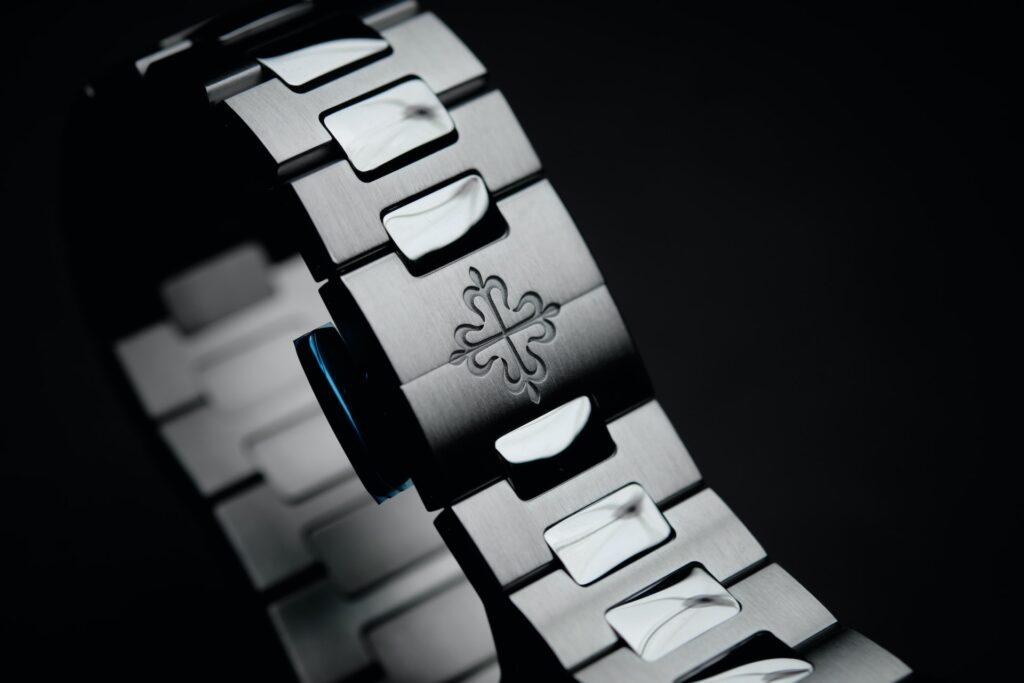
The H-link bracelet was popularized by luxury watch brands such as Cartier and Rolex. However, it is now commonly used by many other watch brands due to its versatile design. The bracelet is suitable for both dress and casual watches, and its sturdiness makes it a popular choice for sports watches.
12. The Integrated Bracelet
The integrated bracelet is a unique type of metal watch bracelet that is designed to blend seamlessly with the watch case, giving the watch a more cohesive and streamlined look. Unlike other types of bracelets, the integrated bracelet is specifically designed for a particular watch model and is often an essential element of the watch’s design.
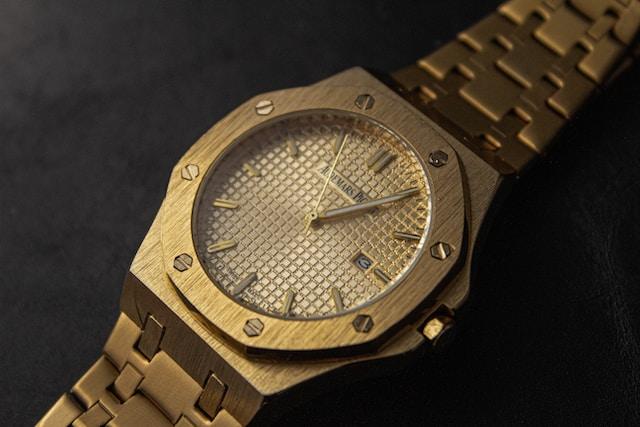
The integrated bracelet is crafted from the same materials as the watch case and is usually attached directly to the case with screws, rather than using traditional spring bars. This ensures a more secure connection and prevents the bracelet from accidentally detaching from the watch.
Many high-end luxury watch brands, such as Patek Philippe, Audemars Piguet, and Richard Mille, are known for their integrated bracelet designs. However, the integrated bracelet is not limited to high-end watches and can be found in a variety of watch styles and price points.
13. The Expansion Bracelet
The expansion bracelet, also known as a stretch bracelet, is a type of watch bracelet that is characterized by its elastic design. It is made up of numerous small metal links that are connected by tiny springs, which allow the bracelet to stretch and contract as it is put on or taken off the wrist. The expansion bracelet was first introduced in the early 20th century and quickly gained popularity due to its convenience and ease of use.
One of the benefits of the expansion bracelet is its adjustability. It can fit a wide range of wrist sizes, making it a popular choice for those who have difficulty finding a bracelet that fits comfortably. Additionally, the absence of clasps or buckles means there are no metal parts that could potentially irritate the skin. However, due to its elastic properties, the bracelet may loosen over time, resulting in the watch moving around on the wrist.
14. The Rally Bracelet
The Rally Bracelet features circular cutouts or perforations in the links. These cutouts resemble the holes found on the steering wheels of rally cars, which is where the bracelet gets its name. Its circular design adds a unique and sporty look to any watch it’s paired with. The Rally bracelet is often seen on chronograph watches or sports watches, complementing their dynamic and adventurous aesthetics.
Image: Strapsco.com
Conclusion
Choosing the right metal watch bracelet can make a world of difference in both comfort and style. With so many options available, understanding the unique features and benefits of each type is key to finding the perfect match for your timepiece. Whether you prefer the classic elegance of an Oyster bracelet, the bold look of a Jubilee, or the versatility of a Milanese or Shark Mesh, there’s a bracelet out there for every occasion and personal style. Remember, the bracelet isn’t just about aesthetics—it’s also about fit and durability. A well-chosen bracelet enhances the overall experience of wearing your watch, making it both comfortable and stylish.
Now that you’re familiar with 14 popular types of metal watch bracelets, you can confidently select the one that suits your watch and lifestyle best. With the right bracelet, your watch will not only tell time—it’ll make a lasting impression. Hope you enjoyed this guide and found it helpful in your search for the perfect bracelet!
If you have any questions or suggestions, feel free to leave them in the comment section below. We’d love to hear from you and will get back to you as soon as possible.
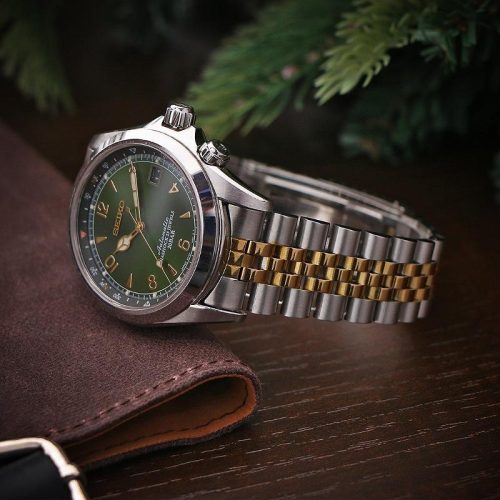
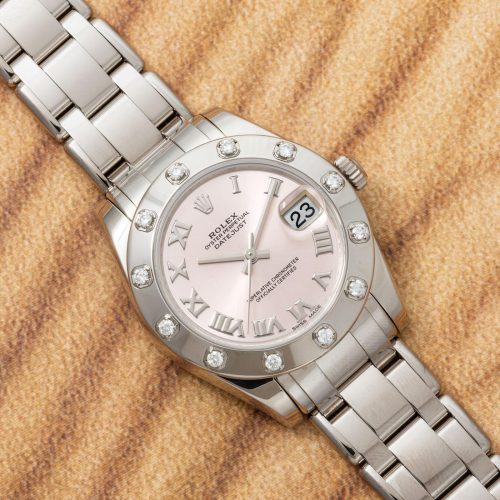
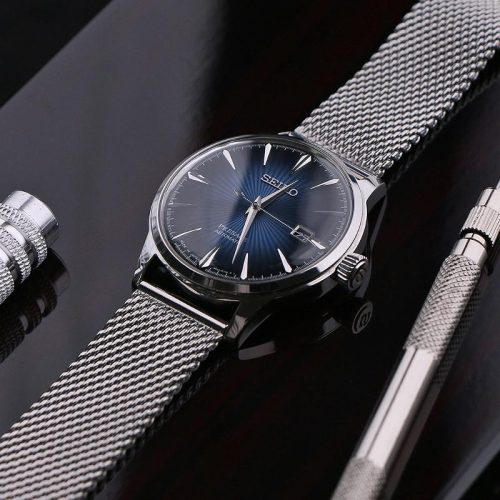
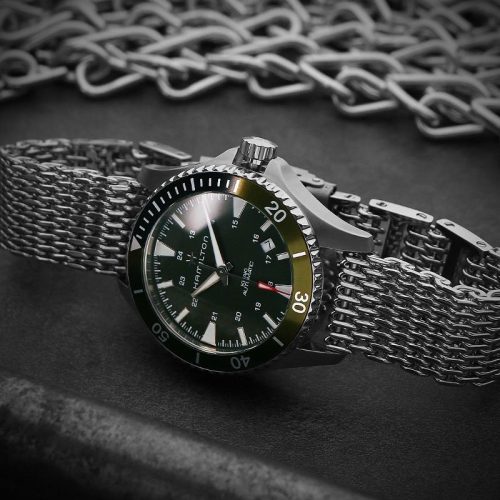
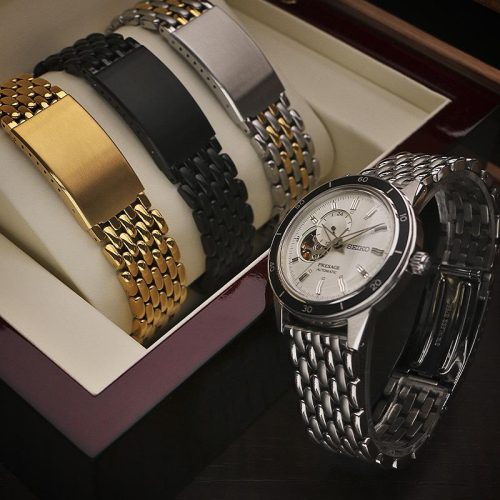
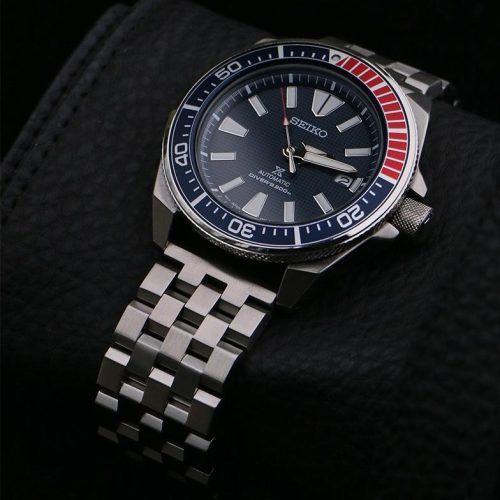
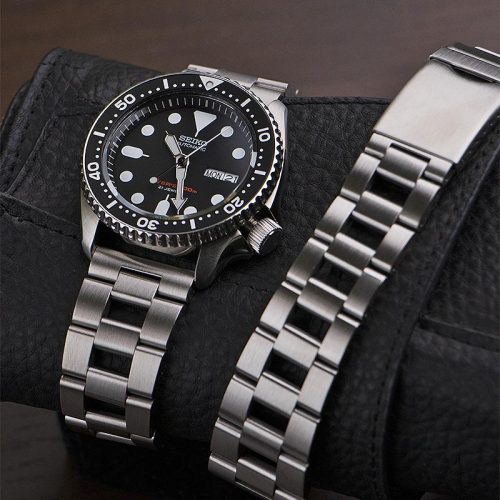
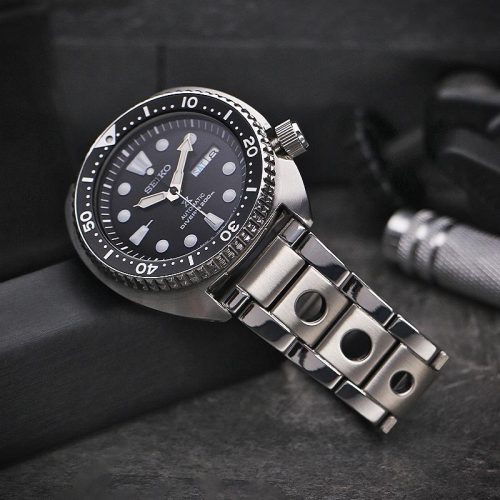
Great bracelet roundup! I’m a big fan of the engineer style – so rugged and masculine. One suggestion would be comparing stainless steel vs. titanium engineer bracelets. I think titanium makes for a great modern option. Keep up the awesome watch content!
Thanks for the feedback Mike! Engineer bracelets do have such a rugged, tool watch vibe. I really appreciate the suggestion on doing a dedicated post comparing stainless vs. titanium engineer options. That’s a great specific topic to cover in-depth. Stay tuned for more watch content soon!